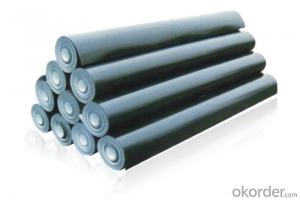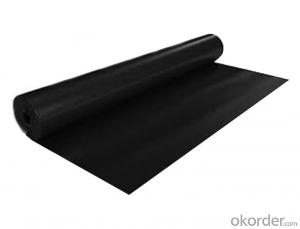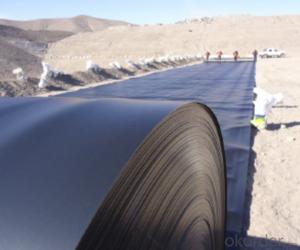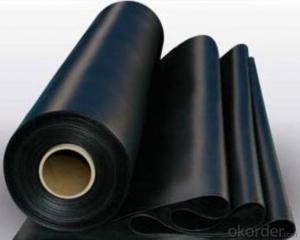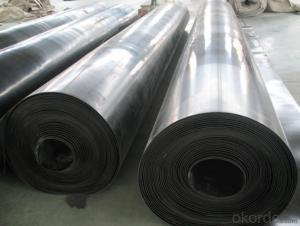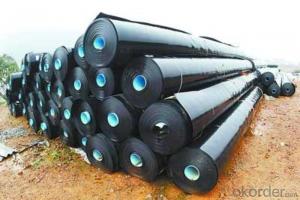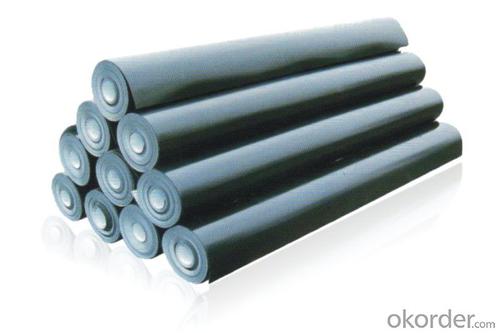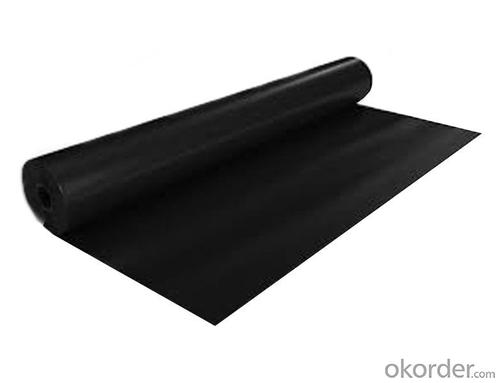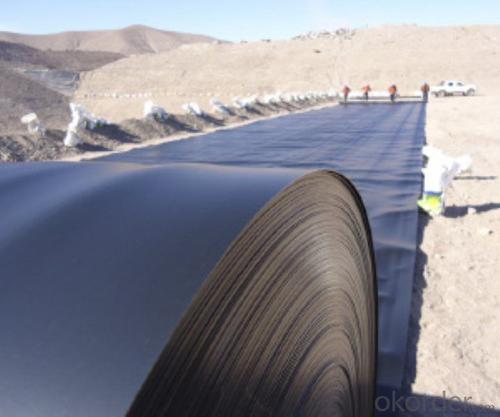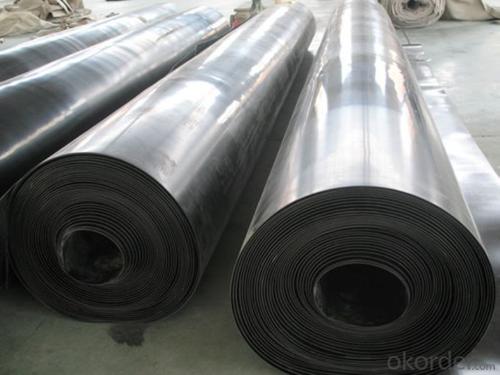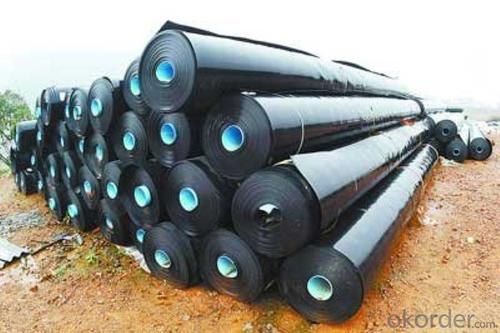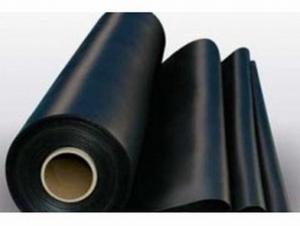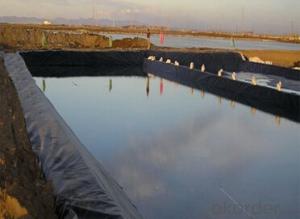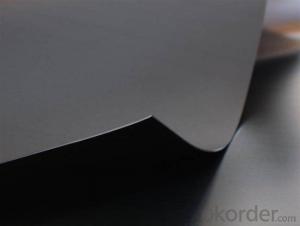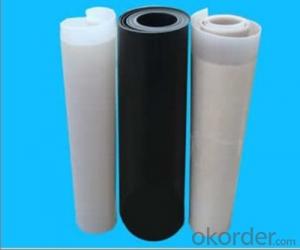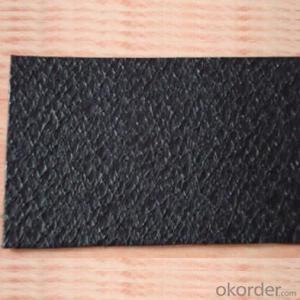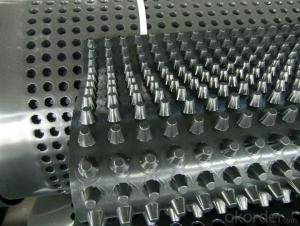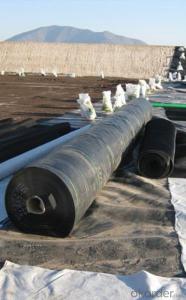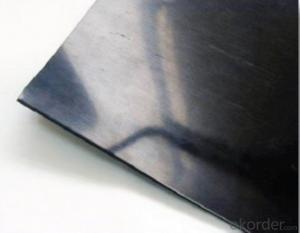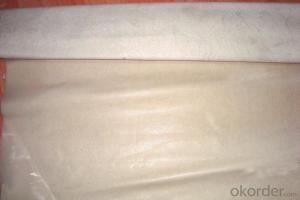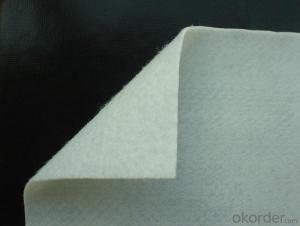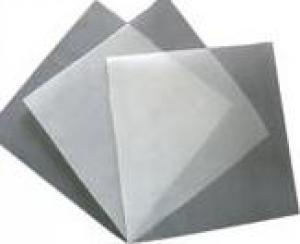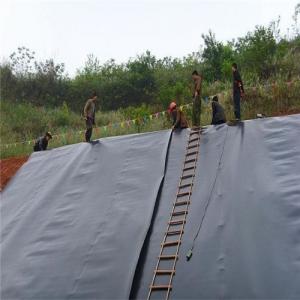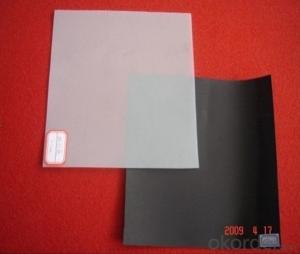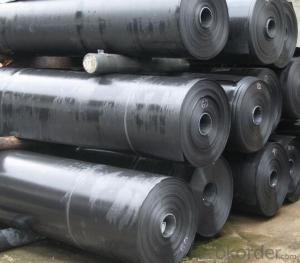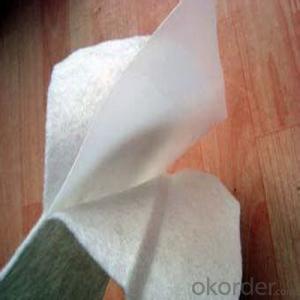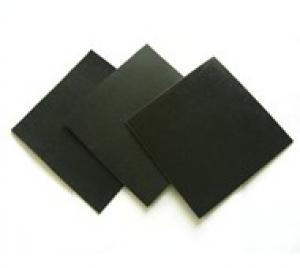Plastic Geomembrane - Geomembrane 0.6 mm HDPE Made in China
- Loading Port:
- Qingdao
- Payment Terms:
- TT OR LC
- Min Order Qty:
- 8000 m²
- Supply Capability:
- 100000 m²/month
OKorder Service Pledge
OKorder Financial Service
You Might Also Like
Geomembrana 0.8 mm of HDPE for The Tank Made in China
Description Of Geomembrana 0.8 mm of HDPE for The Tank Made in China
Geomembrane, water-proof plate, is made from polymer materials like polyethylene, through blow molding.
Main Features of Geomembrana 0.8 mm of HDPE for The Tank Made in China
Polyethylene (PE) geomembrane is divided into low-density polyethylene (LDPE) geomembrane
Applications of Geomembrana 0.8 mm of HDPE for The Tank Made in China
1. HDPE geomembrane's applications in municipal engineering: subway, underground works of the building, planting roof, roof garden, sewage pipe seepage control;
2. Polyethylene impermeable membrane is applicable to the garden: artificial lake, river, reservoir, golf course pond bottom, slope, green lawn waterproofing and damp-proofing
IMages of Geomembrana 0.5 mm of HDPE for The Dam Made in China
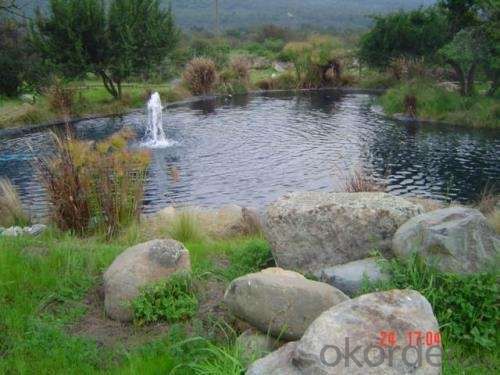
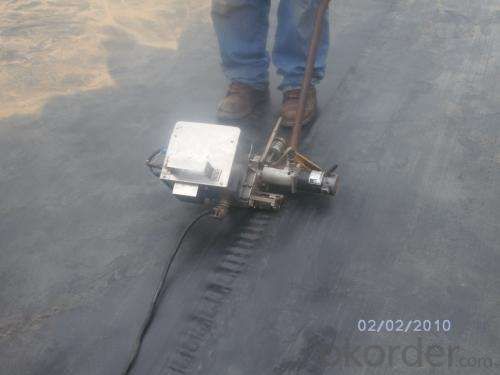
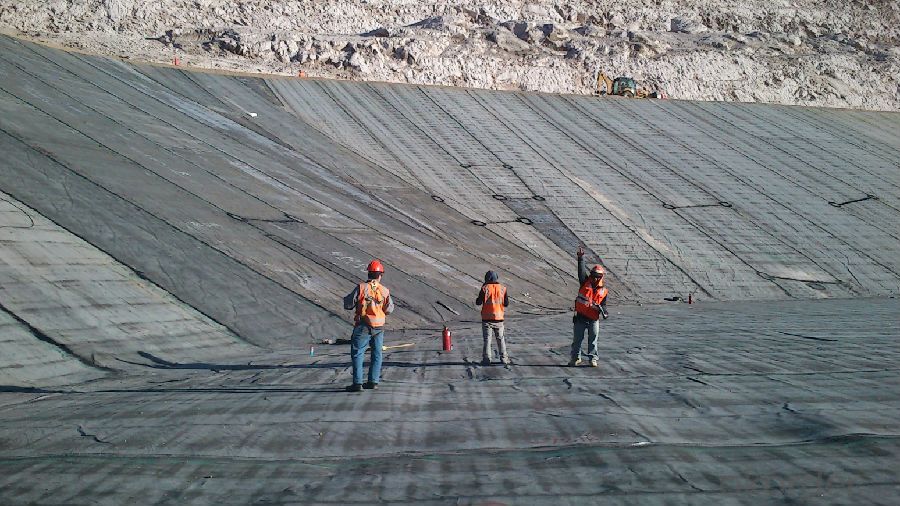
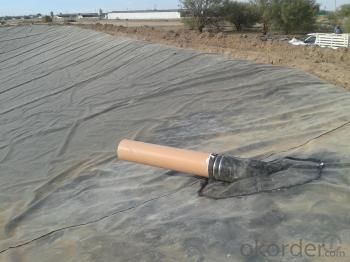

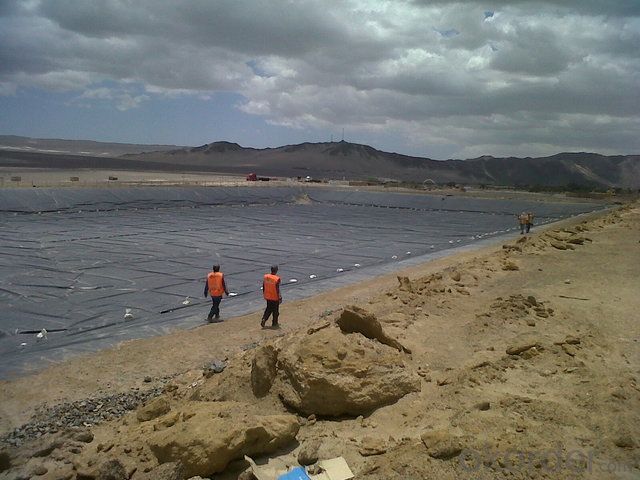
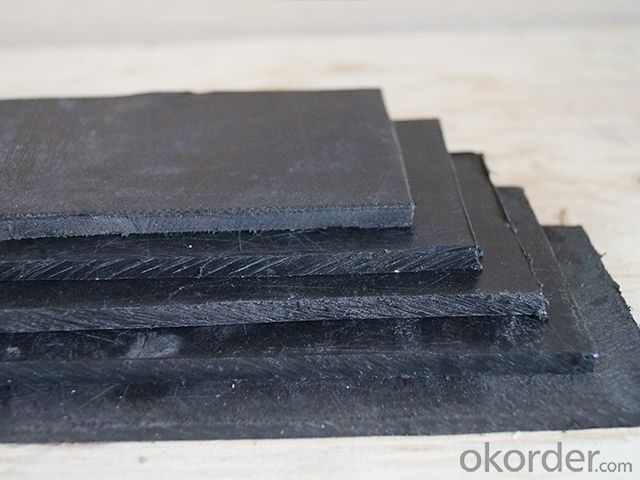
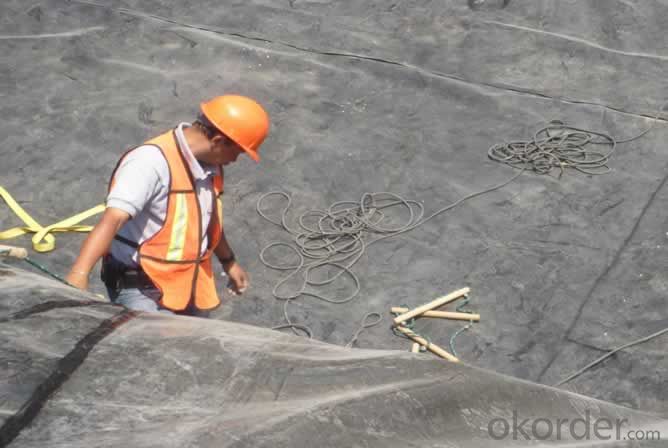
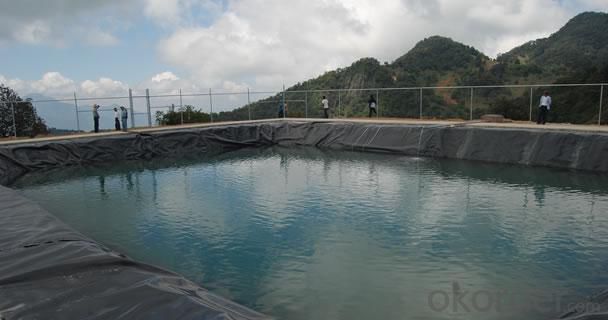
FAQ:
1. What are we supplying?
We are specialized in producing .geotextile , geocell, geogrid, geomembrane
2. How Many years experience do we have?
We have been exported to more than 15 countries in the past 10 years.
3. How long do we usually reply your request?
We always reply our customer within 12 hours.
- Q: How do geomembranes perform in high humidity environments?
- Geomembranes perform well in high humidity environments as they are designed to be impermeable and resistant to moisture. They effectively prevent the diffusion of water vapor, ensuring structural integrity and preventing moisture-related issues such as mold growth and degradation.
- Q: Principle of energy saving insulation film?
- Energy-saving insulation film maintains a constant indoor temperature by preventing the indoor and outdoor thermal convection. in summer when the outdoor temperature is higher than the indoor, energy-saving insulation film keeps the heat outside, keeping cooling inside; in winter, when outdoor temperature is lower than indoor temperature, saving insulation film prevent cold outdoor from entering indoor, and retain heat generated inside. the indoor temperature is not affected by the outdoor temperature. Energy-saving insulation film solar control performance comparison
- Q: How do geomembranes prevent seepage in reservoirs?
- Geomembranes prevent seepage in reservoirs by providing a impermeable barrier that prevents water from leaking through the reservoir's base or sides. This synthetic lining material is installed beneath or around the reservoir, effectively sealing it and reducing the risk of water loss or contamination due to seepage.
- Q: How do geomembranes contribute to the prevention of groundwater pollution?
- Geomembranes contribute to the prevention of groundwater pollution by acting as a barrier between potential contaminants and the underlying soil and groundwater. These impermeable liners are used in various applications, such as landfills, industrial sites, and containment ponds, to prevent the migration of harmful substances into the groundwater. By effectively isolating pollutants and preventing their infiltration, geomembranes help safeguard the quality and purity of groundwater resources.
- Q: How do geomembranes perform in high wind conditions?
- Geomembranes perform well in high wind conditions due to their strong and flexible nature. They are designed to withstand strong winds and are often reinforced with materials like woven or non-woven geotextiles. This reinforcement helps to prevent tearing or damage from wind forces. Additionally, geomembranes can be securely anchored to the ground using various methods, further enhancing their ability to withstand high winds. Overall, geomembranes are reliable and effective in protecting against wind-related issues in various applications.
- Q: What are the potential risks associated with geomembranes?
- Some potential risks associated with geomembranes include punctures or tears that can compromise their effectiveness in containing liquids or gases, improper installation leading to leaks or failures, degradation over time due to exposure to UV radiation or chemical reactions, and the potential for damage during construction or maintenance activities. Additionally, if not properly managed, geomembranes can pose environmental risks if they are not disposed of or recycled correctly at the end of their lifespan.
- Q: What is the floor finishing protective film?
- It's better to choose PVC plus knitting cotton as floor finishing protective film because of its good buffer capacity. EPE as wall packaging film is of super quality and competitive price. Transparent packaging film has long service life and can be recycled for 4-5 times.
- Q: In what industry can seepage-proof geomembranes be applied?
- HDPE membranes are applicable to aquaculture?industry; 6:washing ponds, power plant regulating reservoirs. Polyethylene seepage-proof membranes are applicable to gardens. Intensification: such as the seepage-proof control of rivers and lakes, reservoirs and dams; HDPE geomembranes are applicable to environmental protection, such as waterproof and dampproof management of revetments, afforesting lawns,etc. 9. the seepage-proof control of heap leachings and bottom lining of tailings, impounding reservoirs, chemical plants, seepage proofing for irrigation systems, impounding ponds, and the seepage control and reinforcement of ditches. Polyethylene geomembranes with high density are applicable to petrochemical industry and vertical core walls. HDPE seepage-proof membranes are applicable to municipal?engineerings, sanitation, reservoirs, the bottom of golf course ponds, drinking water ponds. LDPE seepage-proof membranes are applicable to agricultural industry, the seepage-proof control of roof gardens and culverts, settling ponds and revetments, subways, dissolving?tanks, saltern crystallizing ponds. 2. leaking?stoppage: road reinforcement, such as refuse landfills, sea cucumber revetments, etc. 7;4. halogen pool caps, ashery. 5. refinery, sewage?disposal?plants, fishponds twice linings, building underground constructions, and lining of sedimentation tanks; 3.chemical reaction pools: artificial?lakes, hospital solid wastes, the seepage-proof control of oil tanks. high density polyethylene impermeable membranes are applicable to salt industry, lining of shrimp ponds. LDPE seepage-proof membranes are applicable to water?conservancy industry. Seepage-proof membranes application fields1, factory-like culture ponds, sewage conduits; 8. storage?yards, salt membranes. Polyethylene geomembranes are applicable to mining industry, planted roofs. Low density polyethylene membranes are applicable to transportation facilities, and plastic straw mat membrane in saltern;10
- Q: Is HDPE geomembrane the same as polyethylene polypropylene fiber?
- Of course it isn't. They are totally different products. HDPE geomembrane, also known as high density polyethylene,is a single-layered plastic sheet, mainly used for the anti-seepage projects, such as refuse landfills, tailings treatment plants, sewage treatment tanks, etc. Polyethylene polypropylene fiber is a multi-layered composite waterproofing membrane, and its raw materials are PP non-woven fabric and polyethylene. It is mainly used in moistureproof and waterproof projects, such as roof, wall, toilet, basement, refregeration house, bridge, pool, underground pipeline, etc. These two products are of different raw materials, molecular structures and use. Therefore, they are not the same.
- Q: How do geomembranes contribute to groundwater protection?
- Geomembranes contribute to groundwater protection by acting as a barrier between contaminants and the underlying groundwater. They are impermeable liners made of synthetic materials that prevent the migration of pollutants, such as chemicals or waste, into the groundwater. This helps to safeguard the quality and availability of groundwater, which is a vital source of drinking water and ecosystem support.
Send your message to us
Plastic Geomembrane - Geomembrane 0.6 mm HDPE Made in China
- Loading Port:
- Qingdao
- Payment Terms:
- TT OR LC
- Min Order Qty:
- 8000 m²
- Supply Capability:
- 100000 m²/month
OKorder Service Pledge
OKorder Financial Service
Similar products
Hot products
Hot Searches
Related keywords
